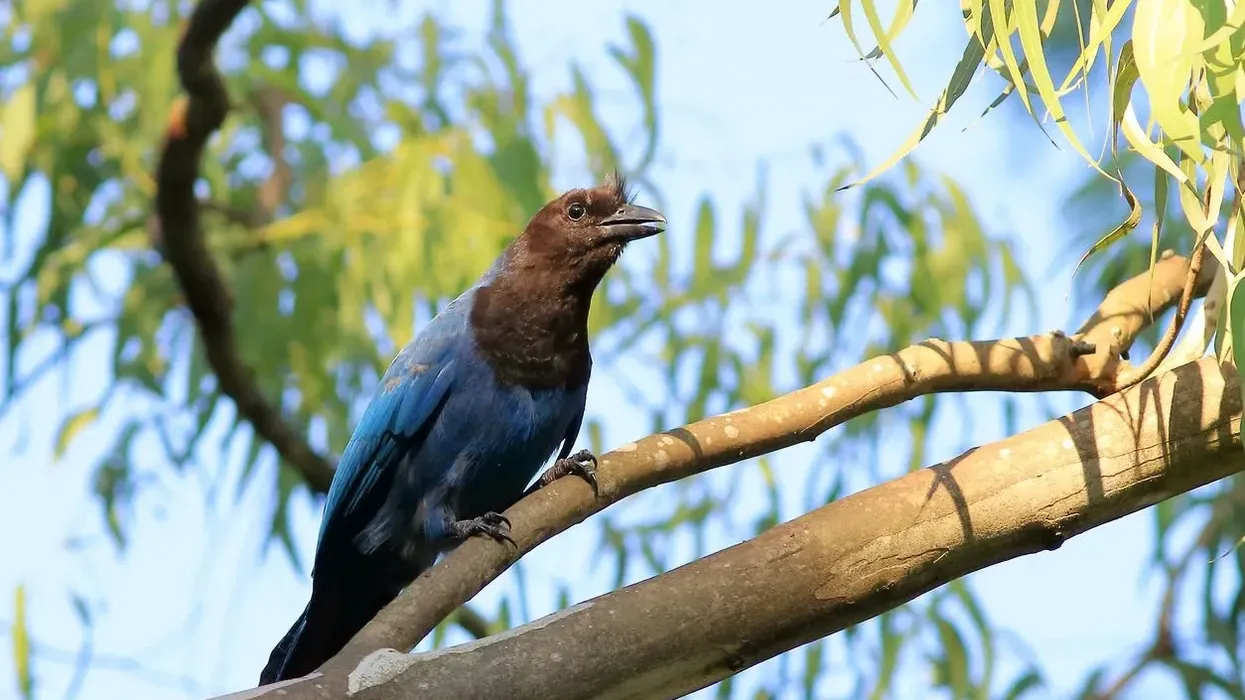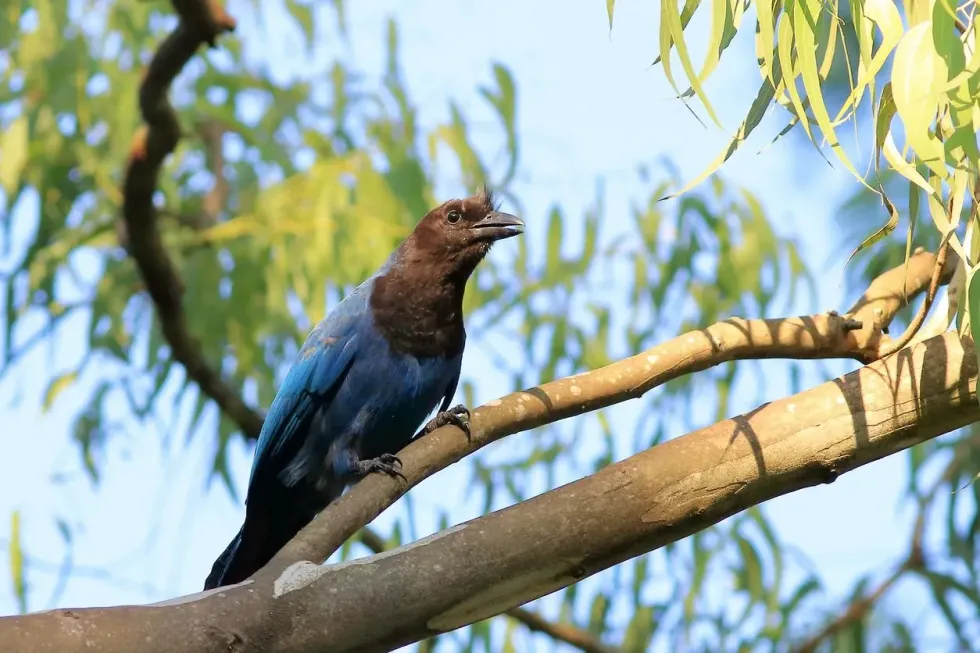The azure jay (Cyanocorax caeruleus) is a bird belonging to the crow family. This bird is found primarily in the Atlantic forests of South America.
There is another type of bird residing in Central America called the azure hooded jay (Cyanolyca cucullata). They are differentiated from the azure jay species by the different colors of the plumage and the presence of a head crown. However, both of them belong to the Corvidae family of jays.
They are found in the tropical and temperate forests of Central and South America. The azure jay is considered to be the state bird of Parana.
The azure jay is under extreme threats of habitat loss due to logging and deforestation. This indicates that their population might be decreasing at a slow to moderate rate.
On the other hand, the other type of azure jay called the azure hooded jay is found in a moderately higher number and more commonly than the non-hooded ones.
However, even their population has undergone a significant rate of decline which is probably generated by the loss of habitats in their local range. The decreasing population of both the hooded and non-hooded azure jay is a topic of concern in their places of origin.
To know more facts about this interesting species, keep on reading these facts. For similar content check out our articles about the godwit and marbled godwit too.
Azure Jay Interesting Facts
What type of animal is an azure jay?
An azure jay (Cyanocorax caeruleus) is a species of bird of the crow family found in South America.
What class of animal does an Azure Jay belong to?
An azure jay (Cyanocorax caeruleus) of the Corvidae family, genus Cyanocorax, and order Passeriformes belong to the class Aves, the common class for all birds.
How many azure jays are there in the world?
The total population of azure jays in the world has not been determined however, they are rarely seen throughout their range. The global population of hooded birds stands a bit less than 50,000 mature individuals. This equates to a total number of 20,000-49,999 mature birds in its range.
Where does a azure jay live?
The azure and azure hooded jays show a different preference for distribution. The range of the azure hooded jay (Cyanolyca cucullata) extends from Central America to South America while only a few parts of South America shelter the species of azure jay of the Corvidae family.
This bird is found mostly in the localities of the southeastern parts of Brazil followed by northeastern Argentina. It is the state bird of Parana.
Very few records show that these birds live in Paraguay but there is no proper evidence to suggest otherwise. In Brazil, azure jays are distributed throughout the south of Rio de Janeiro and Sao Paulo. From there, they enter Argentina through Misiones and north Corrientes.
Azure hooded jays are common in the Caribbean slope of southeastern Mexico. From there, they move southwards and enter Honduras, Costa Rica, Guatemala, and western Panama through northeastern and central Oaxaca.
What is an azure jay's habitat?
Azure jays although found rarely, prefer to live in lowlands forests. An azure jay habitat includes places like lowland evergreen forests, forests with white sand soils, and southern temperate forests.
They are most commonly found in the Araucaria forests and live at heights of 3280 ft (1000 m) above sea level. However, the species of azure hooded jay can occur along the slopes of higher mountains. They primarily inhabit humid evergreen forests in tropical countries.
Pine forest is a common habitat preference of this bird. The majority of these birds populate forest edges and uninterrupted cloud forests rather than dense forests with thick growth.
Who do azure jays live with?
Azure and azure hooded jays are moderately social species of birds of the Corvidae family. These birds are found in groups of small loose flocks consisting of five to 10 individuals. They are also commonly observed to flock with some birds of different species like the plush crested jay, the Emerald toucanet, and the unicolored jay.
How long does an azure jay live?
The birds can stay alive for a long time. The average azure jay lifespan is 36 years but there is no information regarding the lifespan of an azure hooded jay.
How do they reproduce?
The breeding pattern of these birds is poorly studied. There is very little information regarding the nesting behavior of the bird since nests are difficult to find.
The breeding season of this bird commences in October and lasts up to November. The azure hooded jay often preens each other and shows their crown feathers to reveal their interest to mate. The bird presumably nests in tall trees and sometimes in abandoned nests of other birds.
The females lay two to four eggs in a single clutch and the juveniles leave the nest after 20 days. The parental behavior of the azure jay has not been studied properly.
What is their conservation status?
The species of azure jay is listed as a Near Threatened species in the IUCN Red List but the azure hooded jay is listed as a species of Least Concern in the list. The azure jay population has decreased rapidly in their range mainly because of degrading habitats.
This has made the bird globally endangered.
The population of the species of azure hooded jay is also declining, however, their decline has not been quantified to be as rapid as the non-hooded species making them a species of lower concern. They are also distributed over a larger range and have continued to retain most parts of their range despite the declining population.
Azure Jay Fun Facts
What do azure jays look like?
The appearance of the azure jay is different from the appearance of the azure hooded jay. The azure jay has a blue body but the blue differs from the color of a blue jay.
The black-colored head and upper chest look contrasting to the rest of the plumage. The females are smaller in size than the males. On the other hand, the azure hooded jay has a dark blue plumage and black head and upper chest.
They have a sky blue head crown that is bordered by white feathers. The juveniles have a lighter plumage than the dark blue feathers of the adults.

How cute are they?
An azure jay crow has a pudgy structure which makes this bird species look very cute.
How do they communicate?
Azure jay birds communicate with each other by vocalizations. They have different types of high-pitched shrills for various situations.
How big is an azure jay?
The average length of an azure jay is 16 in (40 cm). The length of an azure hooded jay ranges between 11-12 in (28-30 cm). The latter is smaller in length than the former. The length of an azure jay is slightly less than that of a black-headed jay.
How fast can an azure jay move?
The speed of this species has not been determined.
How much does an azure jay weigh?
The average weight of an azure jay is 9.5 oz (270 g).
What are the male and female names of the species?
The male and female birds of this species are respectively known as cock and hen.
What would you call a baby azure jay?
The baby of a bird is referred to as a chick.
What do they eat?
The species of azure jay and the species of azure hooded jay feed on nut-like seeds as well as on fruit and insects.
Are they dangerous?
No, they are not dangerous.
Would they make a good pet?
Jaybirds are a wild species and they are not meant to be made indoor pets.
Did you know...
Their practice of burying araucaria seeds in the ground to consume later helps in the growth of the plant.
What are the different types of jays?
There are a large number of jaybirds found all over the world. Some of them are named the scrub jay, the blue jay, the steller's jay, the crested jay, the green jay, and the Eurasian jay.
Do azure jays migrate?
The azure jay is a residential species that generally does not migrate.
Here at Kidadl, we have carefully created lots of interesting family-friendly animal facts for everyone to discover! For more relatable content, check out these limpkin facts and common snipe facts for kids.
You can even occupy yourself at home by coloring in one of our free printable azure jay coloring pages.








